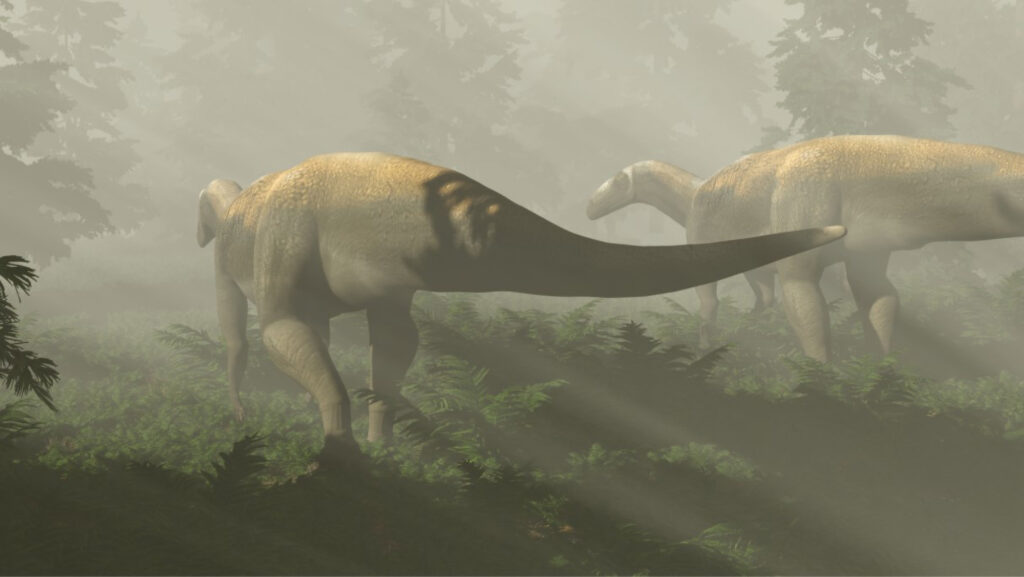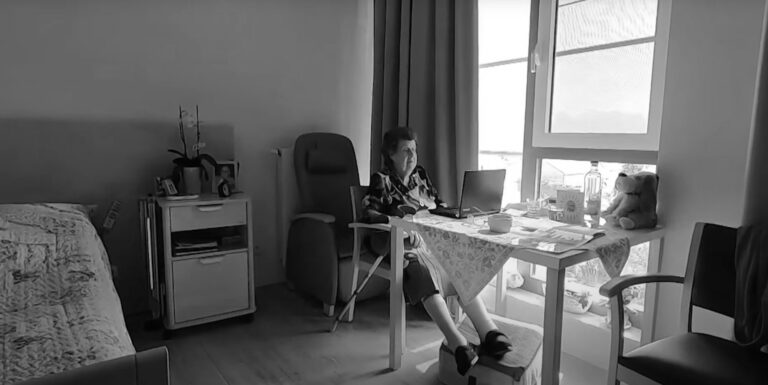This Australian velociraptor-like dinosaur once thought to have been a massive predator has been revealed to have been a “timid vegetarian” instead.
The University of Queensland in Australia has released a statement saying that Dr Anthony Romilio, a palaeontologist, led a team that analysed footprints left by the dinosaur with them concluding that it had been a vegetarian and not a predator.
The statement said that “fossil footprints found in an Ipswich coal mine have long been thought to be that of a large ‘raptor-like’ predatory dinosaur” but it added that scientists have now established that it was in fact a timid herbivore.
The footprints, which the university says were dated to the latter part of the Triassic Period, around 220 million years ago, were analysed again because the “research team suspected there was something not-quite-right with the original size estimates and there was a good reason for their doubts.”

(Anthony Romilio, Kamil Porembinski/Newsflash)
Dr Romilio is quoted in the same as saying: “For years it’s been believed that these tracks were made by a massive predator that was part of the dinosaur family Eubrontes, with legs over two metres tall.”
He added: “This idea caused a sensation decades ago because no other meat-eating dinosaur in the world approached that size during the Triassic period.
“But our research shows the tracks were instead made by a dinosaur from the Evazoum family – vegetarian dinosaurs that were smaller, with legs about 1.4 metres tall and a body length of six metres.”
The University said that the fossilised dinosaurs were “discovered more than half a century ago around 200 metres deep underground at a coal mine, just west of Brisbane.”
Dr Romilio said: “Unfortunately, earlier researchers could not directly access the footprint specimen for their study, instead relying on old drawings and photographs that lacked detail.”
He added: “It must have been quite a sight for the first miners in the 1960s to see big bird-like footprints jutting down from the ceiling.”

(Anthony Romilio, Kamil Porembinski/Newsflash)
The co-author of the research, named in the statement as Hendrik Klein, who is a fossil expert from the Saurierwelt Palaeontologisches Museum (the Dinosaur World Palaeontological Museum) in the German capital Berlin, said that the footprints consisted of “water-sodden layers of ancient plant debris with the tracks later in-filled by silt and sand.”
Klein said: “This explains why today they occur in an upside-down position right above our heads.
“After millions of years, the plant material turned into coal which was extracted by the miners to reveal a ceiling of siltstone and sandstone, complete with the natural casts of dinosaur footprints.”
The university explained that the mine closed a long time ago but luckily, in 1964, geologists and the Queensland Museum “mapped the trackway and made plaster casts, now used in current research.”
Klein said: “We made a virtual 3D model of the dinosaur footprint that was emailed to team members across the world to study.”
“The more we looked at the footprint and toe impression shapes and proportions, the less they resembled tracks made by predatory dinosaurs – this monster dinosaur was definitely a much friendlier plant-eater.
“This is still a significant discovery even if it isn’t a scary Triassic carnivore.

(Anthony Romilio, Kamil Porembinski/Newsflash)
“This is the earliest evidence we have for this type of dinosaur in Australia, marking a 50-million-year gap before the first quadrupedal sauropod fossils known.”
The University said that the team’s research has been published in the academic journal Historical Biology, and that involved cooperation between Australian, German and French experts.
To find out more about the author, editor or agency that supplied this story – please click below.
Story By: Joseph Golder, Sub-Editor: Joseph Golder, Agency: Newsflash
The Ananova page is created by and dedicated to professional, independent freelance journalists. It is a place for us to showcase our work. When our news is sold to our media partners, we will include the link here.




